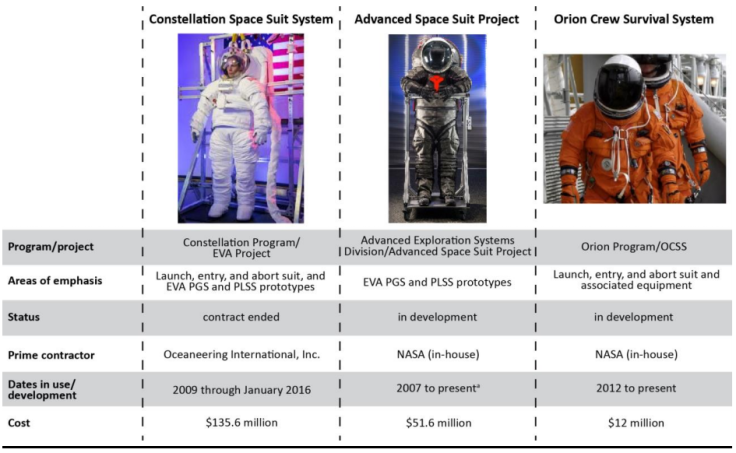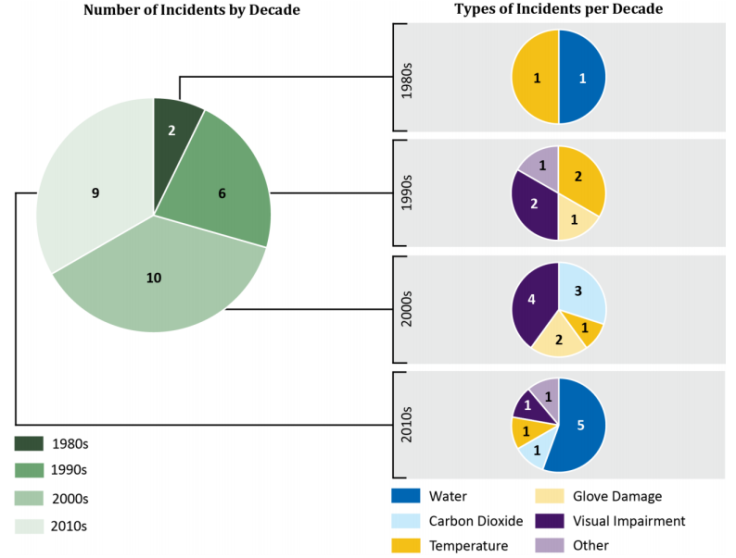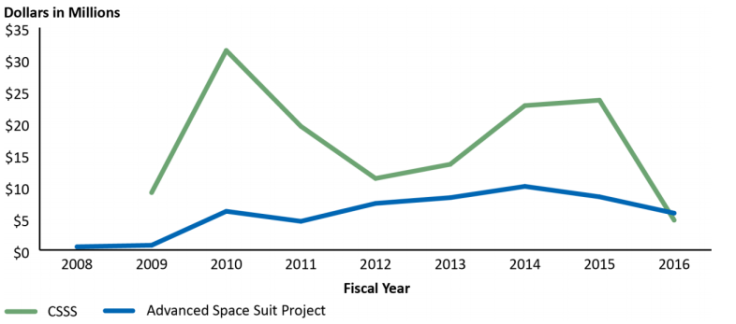NASA Is Running Out Of Usable Spacesuits With No Replacement In Sight

There is a “significant risk” that NASA’s next-generation spacesuits — meant to be worn by astronauts undertaking deep space missions to Mars and beyond — may not be ready before the International Space Station’s potential retirement in 2024. If this happens, not only would astronauts on board the ISS have to continue using the aging Extravehicular Mobility Units (EMUs) they currently use for spacewalks, they would also miss the opportunity to test the new suits on board the ISS.
These are the findings of a 52-page audit report released by NASA’s Office of Inspector General (OIG) on Wednesday.
Read: Here’s How You Can Help Astronauts Poop In Space
“Although the capabilities of NASA’s current EMU are adequate for ISS use, the spacesuit will not meet the needs of the Agency’s deep space exploration plans. For example, the current EMU lacks the hip flexibility needed to walk on and explore planetary surfaces,” the OIG said in the report. “Over the past 8 years, NASA has managed three separate spacesuit development efforts intended to support future missions – Constellation Space Suit System (CSSS), Advanced Space Suit Project, and Orion Crew Survival System (OCSS). As of April 2017, none of these efforts have delivered a flight-ready spacesuit.”

Of the original EMUs produced, NASA currently has only 11 left for future operations. Moreover, the suits, which have been operating far beyond their original 15-year lifespan, are plagued with several design and mobility issues.
“The EMU was originally designed to be brought into space, used several times, and brought home for maintenance and refurbishment,” the OIG wrote in its report. “However, the retirement of the Shuttle Program required a new maintenance program Currently, the spacesuits are operating in a different environment onboard the ISS with longer periods between refurbishment and some maintenance tasks performed on-orbit. This has made several of the EMU’s design inadequacies more prominent.”

The report also criticized the space agency for its decision to prolong a contract associated with the Constellation Program even after the program was cancelled.
The Constellation Program, under which NASA awarded a $148 million contract to the Houston, Texas-based Oceaneering International in 2009, was terminated in 2010 by the then President Barack Obama. However, the contract remained active until January 2016, and between 2009 and the end of the contract, NASA paid Oceaneering over $135 million.

In total, since 2007, NASA has spent almost $200 million on three spacesuit development efforts —$135.6 million on CSSS, $51.6 million on the Advanced Space Suit Project, and $12 million on OCSS ($12 million). Despite this, the space agency is years away from having a flight-ready spacesuit capable of replacing the EMU, much less one that is suitable for deep space exploration missions.
“Although NASA is moving toward procurement of a flight-ready article for testing, schedule margins do not allow for much, if any, delay in delivery,” the report warned.
In order to bring NASA’s spacesuit development program back on track, the OIG recommended that the agency develop a formal plan for the design, production, and testing of next-generation spacesuits, and conduct a study comparing the cost of maintaining the current EMU spacesuit and developing and testing a next-generation spacesuit.
NASA, on its part, agreed that the report was a “fair assessment” of the current state of its spacesuit system, but said that the OIG had been “overly critical” of the agency’s decision to stick with the CSSS contract.
“In some cases, the deliverables of the CSSS contract may be used to reduce risk for current ISS EVA systems,” NASA’s chief of human spaceflight William Gerstenmaier said. “We respectfully disagree that the facts presented to the OIG support that portion of the report.”
© Copyright IBTimes 2024. All rights reserved.






















